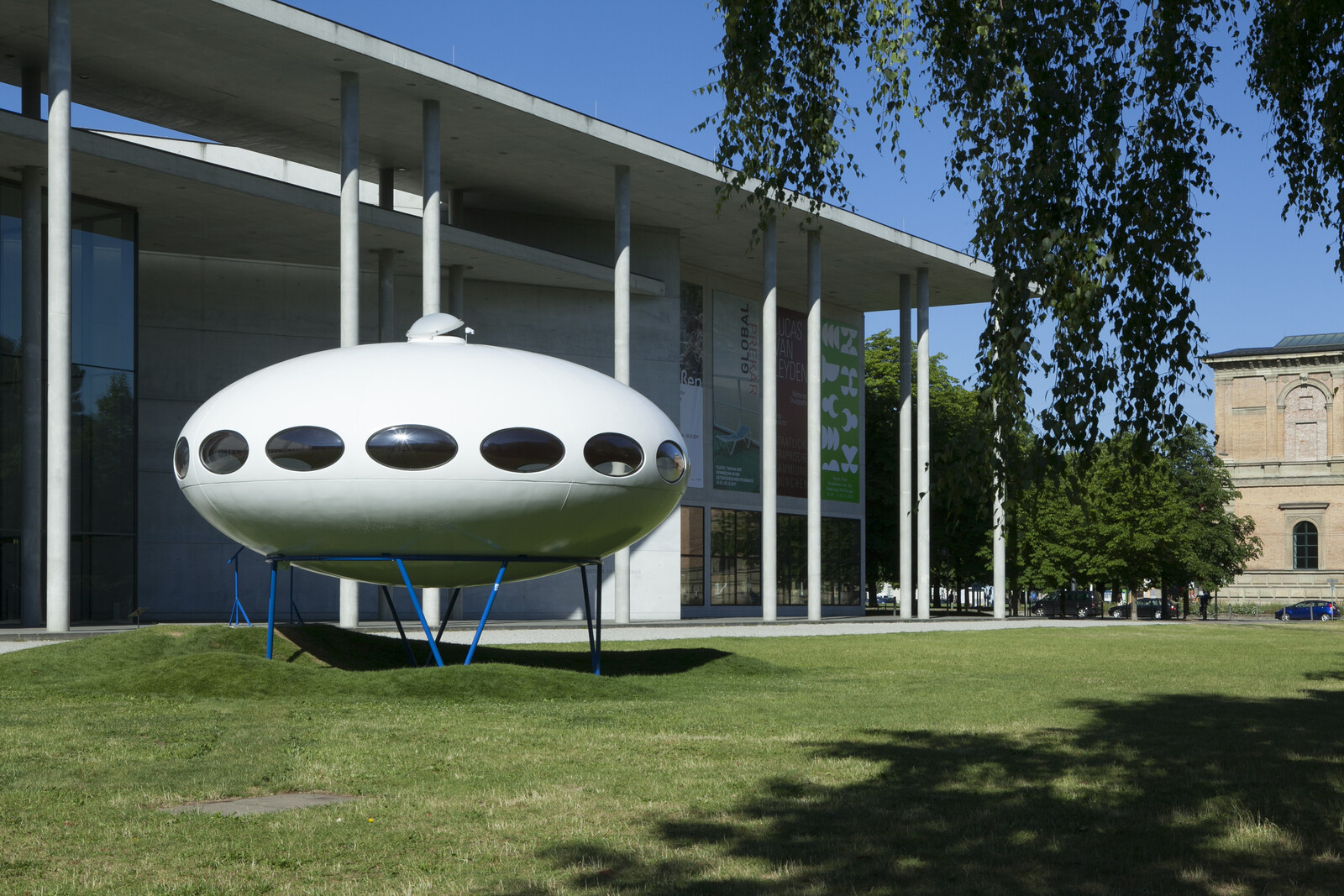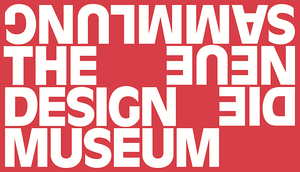June 2, 2017–June 3, 2018
Barer Str. 40
80333 Munich
Germany
Hours: Tuesday–Sunday 10am–6pm
T +49 89 2727250
F +49 89 272725561
info@die-neue-sammlung.de
Die Neue Sammlung is paying tribute to the icon of the space age with a presentation in an outdoor space at Pinakothek der Moderne of the FUTURO, designed by Finnish architect Matti Suuronen in 1965–67 and originally intended as a ski lodge.
Ellipsoid in shape, the FUTURO definitely epitomizes the future visions of the 1960s, in which visionary designs focused on new materials for mobile living environments. Driven by a faith in science and technology and in the conquest of space, the FUTURO symbolizes the striving in that era for new, functional, efficient and mass-producible forms of housing.
With a diameter of eight meters and an overall height of just under six meters the building offers around 25 m² of living space which can be heated by electricity in less than 30 minutes. The building rests on a stable tubular steel frame. It has been designed so that it can even be erected on rough terrain and can withstand not only extreme temperatures, but also earthquakes and storms. The door doubles up as fold-out stairs similar to those on small private jets, and these can be used to access FUTURO, which seemingly floats on its steel base.
FUTURO was manufactured by Finnish company Polykem Ltd. as one of the world’s first mass-produced plastic houses and marketed internationally. Its walls are made of fiberglass-reinforced polyester shells with a sandwich layer of polyurethane foam providing insulation. In order to make assembly and dismantling easier, the house was manufactured in 16 arc segments which could be assembled on site in the space of only two days. A total of 16 double-glazed windows afford a panoramic view right round. There are unfortunately no records of how many FUTURO houses were sold in total. At a conservative estimate there were originally around 70 of them, of which around 60 are still in existence today.
The FUTURO house was acquired in 2016 for Die Neue Sammlung and it is now on show for the first time after comprehensive restoration work. Apart from a continuous bench right round, its circular, open-plan room boasts no interior fittings. The FUTURO house in Munich was initially purchased by Stiebel Eltron in the early 1970s and erected on the company site in Vlotho. It was subsequently acquired by the CharlesWilp-Museum in Witten in 2012. From there, it has moved to Munich. In the 1970s, artist, graphic designer and composer Wilp owned a FUTURO house which was wrapped by Christo in 1970 and in which artists such as Andy Warhol, Claes Oldenbourg and Joseph Beuys guested; it has not, unfortunately, survived.


